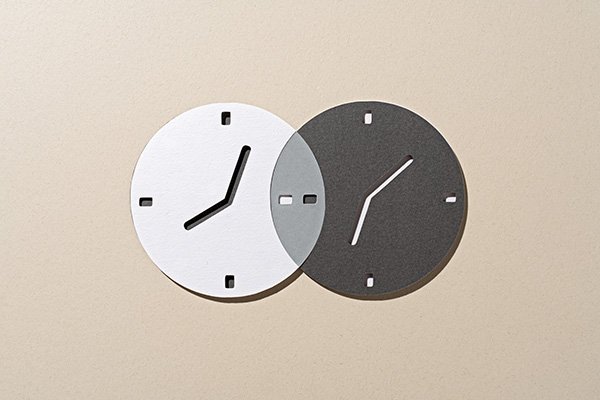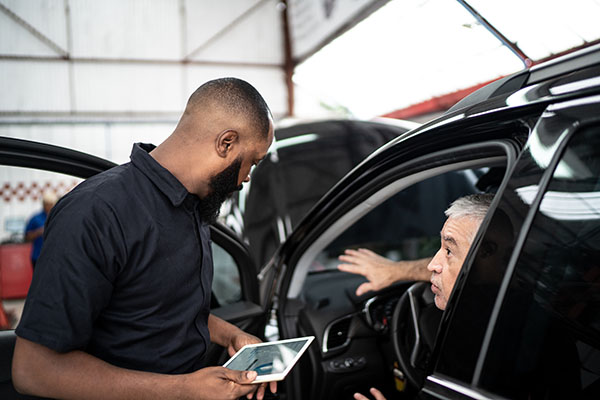The 24/7 Drop Box: Round-the-Clock Kiosk Access Boosts Customer Satisfaction and Upsell Revenue

Article Highlights:
- The kiosk market is expected to more than double from 2019 to 2025.
- Redefine the key night drop box process.
If there’s one insight retailers can take away from 2020, it might be consumers’ appetite for contactless processes, flexibility, and convenience is only growing stronger.
This is especially true in the dealership service department, where self-service kiosks are poised for explosive growth. Consider, according to Mordor Intelligence, the total value of the kiosk market is expected to more than double from 2019 to 2025, up to a market size of nearly $42 billion.
The reason for the boom? It’s simple: Consumers like the technology once they use it, and retailers recognize the possibilities for additional revenue and increased customer satisfaction.
Of the many ways a kiosk can boost the service department, one that can’t be replicated is the convenience and flexibility created by the “24/7 drop box.” What do I mean by that? Exactly what it sounds like – round-the-clock customer access to service kiosks, radically redefining what it means to have a customer-centric operation.
The Hidden Value of Letting Customers Take the Wheel
Two critical things happen when retailers allow 24/7 access to service kiosks: the customer’s convenience becomes the priority, and the customer is activated as a proactive shopper. What both of these things have in common is letting the customer take the wheel of their own experience with the service department.
Let’s look at the convenience aspect first. It’s no secret in this modern age we are all busier than we’ve ever been, which means working with the various schedules of hundreds of customers is key to making their service experience as smooth and efficient as possible.
Wouldn’t it be easier to let them dictate the timing of those interactions? Imagine the following scenario playing out in service:
- A customer drops off their keys, either at a 24/7 kiosk or in person at an advisor station.
- The customer receives an email with a QR code to pick up their keys from a kiosk upon completion of their vehicle service.
- The customer receives a notification that their service is done and returns to the dealership when convenient.
- The customer pulls up the QR code from the email and the kiosk scans the information.
- The customer pays for service at the kiosk.
- The kiosk knows which vehicle keys are associated with that QR code and the keys are returned, vending-machine-style, to the customer.
The process outlined here is almost too easy, requiring next to nothing from service advisors (which frees them to focus on more profitable tasks) and letting the customer exercise full control over every step of the process. We know greater convenience in the dealership is rewarded with greater customer satisfaction, and satisfaction ultimately translates to improved retention rates.
Retailers could take it even a step further by sending a QR code to expedite check-in beforehand (which would also work to retrieve keys after hours). For those worried about the potential security issues of easily accessible kiosks, consider these devices, which are bolted into the ground, are leaps and bounds more secure than a lockbox affixed to a wall. Not only is the unit itself more secure, but the information being placed into the dealership’s hands is more protected. Instead of having written customer information sitting in a bin, the information is typed plainly into the kiosk and is no longer a sitting duck for a thief.
But, what about the second benefit of the 24/7 drop box: activating customers to be more proactive shoppers? This capability is unique to kiosks and further strengthens the argument to allow round-the-clock customer access.
Look again at step one in the process outlined above. By allowing customers to check in for their service appointment and drop off their keys, the kiosk creates upselling opportunities at all hours of the day and night.
Why does interfacing with a kiosk make someone more likely to spend? Because the passive presentation of a device – as opposed to a living, breathing service advisor – allows customers (many of whom default to a defensive mindset when paying for vehicle maintenance) to review the options at their own pace, with maximum transparency around what’s being offered, why, and what it costs.
The pressure to buy or not buy is off. In fact, as they look over additional recommended services on a screen, customers are actually positioned to talk themselves into spending some extra money with the dealership.
Our data suggests automotive retailers could improve upsell rates by 20 percent or more simply from customers self-selecting upsell services at a kiosk.
The flexibility and upselling opportunity created by implementing a self-service kiosk as a 24/7 drop box simply can’t be denied – nor can it be replicated by any other solution.
It’s past time to improve the key drop process and put this technology to work in every dealership service department.
Related Articles:

True Story: Night and Day Service Scheduling
What establishments do you frequently visit? They know you – your name, address, details from your last visit. Why shouldn’t your dealership be the same?

Managing Missed Appointments in Your Service Department
Are you properly handling the missed appointments in your service department?

Bringing Balance to the (Work) Force: Jedi Tactics for Defeating a…
As we celebrate May the 4th, let’s look beyond the stars and into our service departments, where a challenger nearly as daunting as Darth Vader…

3 Reasons You Need a CRM in Your Service Drive
If you’re not currently using a customer relationship management (CRM) tool in your service department, you’re probably wondering if it’s worth having. I present the…















